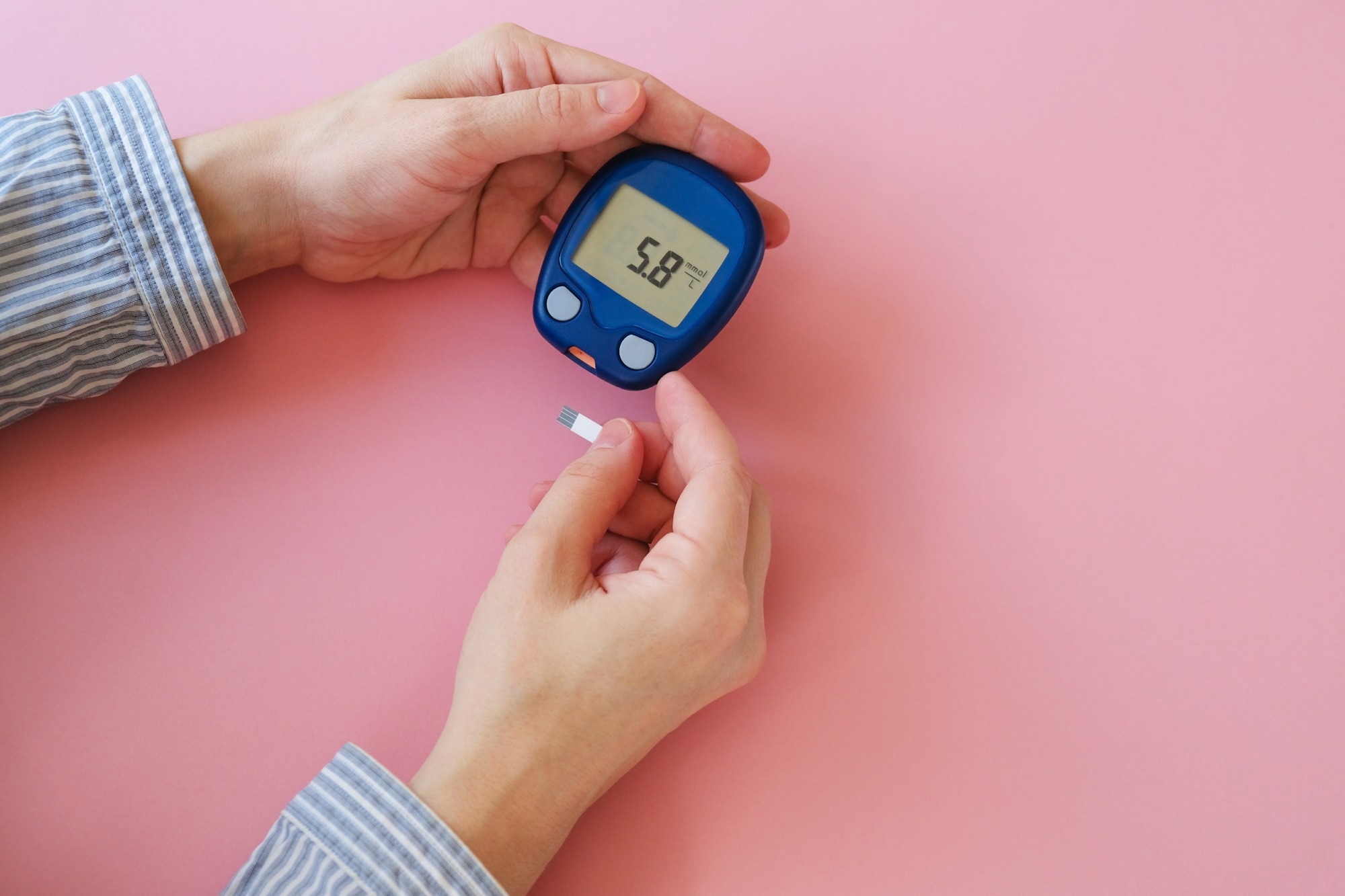Real-world data from over 14,000 Italian adults reveal that GLP-1 receptor agonists can induce remission in type 2 diabetes, with one clinically balanced definition linking drug use to reduced cardiovascular and microvascular risks.

Study: Type 2 diabetes remission after initiation of GLP-1 receptor agonists: frequency, characteristics, and outcomes using multiple definitions in an observational study. Image Credit: Meteoritka / Shutterstock
In a recent study published in The Lancet Regional Health - Europe, researchers examined the clinical characteristics, frequency, and outcomes of type 2 diabetes (T2D) remission following initiation of a glucagon-like peptide-1 receptor agonist (GLP-1RA).
T2D is a metabolic disorder that can lead to a substantially high burden without effective intervention due to macrovascular and microvascular complications. The prevalence of T2D has reached pandemic levels and is projected to increase.
T2D remission has emerged as a realistic goal, especially with interventions that lead to significant weight loss. GLP-1RAs have been effective in reducing glycemia, cardiovascular and renal risk, and body weight.
The possibility of T2D remission with GLP-1RAs has attracted attention, particularly following the development of dual incretin receptor agonists. Despite the increasing clinical use of GLP-1RAs, evidence on the clinical correlates and frequency of T2D remission is limited.
Study Design and Data Sources
In this multicenter Italian study, researchers analyzed clinical characteristics, remission frequency, and outcomes using different definitions of T2D remission after GLP-1RA initiation. The GLP-1RA for Simplification in Diabetes (GLIMPLES) study collected retrospective electronic health record data of T2D patients who started GLP-1RAs between January 2010 and January 2022. The index date corresponded to the first GLP-1RA prescription. Remission was evaluated post-index date according to four definitions.
Definitions of Diabetes Remission
-
R1: HbA1c <6.5% for ≥3 months without glucose-lowering medication.
-
R2: Same as R1 but allowing continued GLP-1RA use.
-
R3: Same as R1 but without new glucose-lowering medications compared to baseline.
-
R4: Same as R1 regardless of ongoing pharmacotherapy.
Participants were classified as being in remission or not based on these definitions. The primary objective was to assess remission frequency, while secondary objectives included evaluating clinical predictors and comparing intermediate outcomes and complications between groups.
Clinical Measures and Statistical Analysis
Intermediate endpoints included blood pressure, body weight, HbA1c, urinary albumin-to-creatinine ratio (UACR), and estimated glomerular filtration rate (eGFR). Complications assessed included microangiopathy, macroangiopathy, and cardiovascular events. Baseline comparisons used Chi-squared and Student’s t tests. Logistic regression examined associations between GLP-1RA type and remission, while Cox proportional hazard models compared time-to-event outcomes.
Participant Profile and GLP-1RA Distribution
A total of 14,141 T2D patients initiating GLP-1RA therapy were included in the analysis. The average participant was 60 years old with a 10-year diabetes history, a BMI of 32 kg/m², and a baseline HbA1c of 8.1%. Common baseline treatments included metformin, insulin, and sulfonylureas. GLP-1RAs used were dulaglutide (50.5%), liraglutide (24.9%), semaglutide (12.1%), exenatide (11%), and lixisenatide (1.4%). Nearly 25% of participants switched GLP-1RAs during follow-up.
Frequency and Duration of Remission
The mean follow-up duration was four years. Remission occurred in 5.8% (R1), 6.2% (R2), 12.2% (R3), and 18.3% (R4) of participants. The time to remission averaged six months across definitions. Remission lasted longer under R3 (9.3 months) and R4 (10.1 months) than under R1 (6.5 months) and R2 (6.6 months).
Weight Loss and Drug Associations
Average weight loss varied by GLP-1RA: semaglutide (3.9 kg), exenatide (3.3 kg), dulaglutide (3.1 kg), liraglutide (3 kg), and lixisenatide (2.8 kg). No single GLP-1RA was consistently superior in achieving remission, though dulaglutide showed positive associations with R1–R3, and semaglutide correlated negatively with R1–R2. These differences were not interpreted as evidence of comparative efficacy due to treatment switching and differing availability periods.
Predictors of Type 2 Diabetes Remission
Remission was more likely among patients with shorter diabetes duration, higher BMI, fewer complications, and lower baseline insulin/SGLT2 inhibitor use. Individuals achieving remission demonstrated modest but significant improvements in body weight (–2 kg), HbA1c (–0.9 to –1.0%), blood pressure (–1 to –2 mmHg), and triglycerides (–15 mg/dL) across remission definitions.
Kidney and Cardiovascular Outcomes
Changes in eGFR were similar across definitions, but R3 was associated with slower UACR progression (~30% less). New-onset microangiopathy was 12–16% lower in participants with R1–R3, suggesting a potential metabolic memory effect. Moreover, R3 was associated with fewer cardiovascular events (HR 0.65), though remission was not associated with differences in macroangiopathy.
Implications and Prognostic Value of R3 Definition
T2D remission occurred in a notable proportion of GLP-1RA users, with outcomes varying by definition. The R1 definition showed 5.8% remission, while the permissive criteria (R4) reached 18.3%. Among definitions, R3 represented the most balanced measure, offering moderate prevalence (12.2%), longer durability (9.3 months), and improved microvascular and cardiovascular outcomes.
Study Limitations and Interpretation
Limitations included retrospective design, absence of mortality data, lack of event adjudication, potential attrition bias, and medication discontinuation not guided by protocol. These factors may influence observed remission rates and outcomes.
Journal reference:
- Fadini GP, Giaccari A, Broglio F, et al. (2025). Type 2 diabetes remission after initiation of GLP-1 receptor agonists: frequency, characteristics, and outcomes using multiple definitions in an observational study. The Lancet Regional Health – Europe, 59, 101499. DOI: 10.1016/j.lanepe.2025.101499